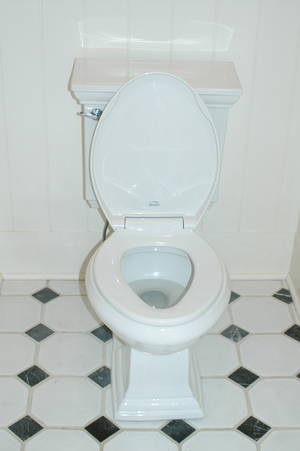The 19th November was World Toilet Day. Established in 2001, the event seeks to draw attention to global sanitation and health problems associated  with a lack of toilets, and break the taboo associated with the topic. Here's your quick fire science on sanitation and the humble toilet, with Simon Bishop and Dominic Ford.
with a lack of toilets, and break the taboo associated with the topic. Here's your quick fire science on sanitation and the humble toilet, with Simon Bishop and Dominic Ford.
- In 2002, the United Nations launched 8 goals for long term global development that they wanted to prioritise. Part of the goals was to halve the number of people without access to basic sanitation, such as septic tanks and private covered latrines, by 2015.
- But, as of 2011, 2.5 billion people still lacked access to these facilities, having to use an uncovered pit latrine, or just an open hole in the ground, as a toilet. That means that across the world only 4.5 billion people have access to a toilet. On the other hand, 6 billion people have access to a mobile phone.
- Lack of sanitation can mean that raw sewage comes into contact with drinking water, leading to widespread infectious disease. More people are killed by diarrhoea every year than AIDS, malaria and measles combined.
- Diarrhoea is caused by bacteria, viruses and single-celled animals called protozoa. It causes fluid loss and dehydration, which can be fatal. To avoid the problem entirely, community-wide sanitation is needed, as well as encouraging hand washing with soap.
- In the UK, engineers may have saved more lives over history than medics - even the British Medical Journal chose the 'sanitary revolution' as the greatest medical advance since 1840.
- This was when Edwin Chadwick, a lawyer frustrated that infectious diseases were straining British finances, pioneered the introduction of piped water to people's homes and sewers rinsed by water.
- One solution is to seed septic tanks with bacteria to break down human waste. A bacterial group called Geobacter break down sewage and store electrical charge at the same time, turning faeces into batteries.
- The recently established Reinvent the Toilet challenge seeks researchers to design cheap-to-use, self-cleaning toilets to be used in areas without water, sewage or electricity. So far, this has funded projects to build solar powered toilets, and even microwave-powered waste disposal units.
- And, for just £60, you can always twin your toilet at home with one in an area of need around the world.










Comments
Add a comment